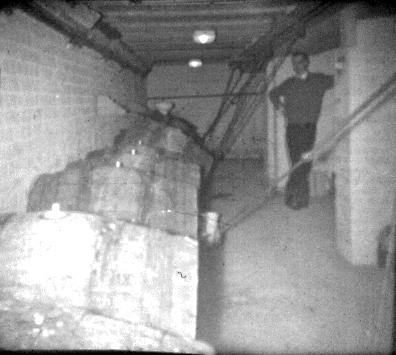Wigan Album
Beech Hill
3 Comments
Photo: Keith
Item #: 14724
Is the Wellfield Sams bar now?
Yes, Jimmy. I visited a few years ago and it was Sam's Bar. The pub is much changed inside but still just about recognisable to me. I lived there for 11 years.
The wooden barrels with the small porous or aerated peg at the top show that they have been “fined” in other words prepared ready for use. This involved knocking out the top wooden bung (on the round side of the barrel), pouring in the isinglass (or finings) to clear sediment and after a short but vigorous paddling of the beer with a stainless steel paddle, replacing (hurriedly) the wooden bung with a new one, using a wooden mallet, so that as little beer escaped as possible, since the process generated a strong uprising in the barrel, especially in warm weather. The finings cause the clarification of the beer by encouraging the live yeast to settle at the bottom of the barrel, this process would eventually occur naturally but the finings speed up the process. After this the porous peg was knocked in to allow a settling down of the fermentation as the pressure was allowed to be released slowly. A beer tap placed at the bottom front, was also knocked in at this stage. This needed a quick strong and accurate blow since this again knocked out a wooden bung so that beer could flow freely through the tap, if this was done incorrectly or too slowly, much beer could be lost. Once done some beer was deliberately released by turning the valve on the tap, into a container, in order again to reduce the pressure within the barrel. After allowing about a day for things to settle down all that remained was to connect the pipes to the beer tap so that pints of beer could be pulled upstairs behind the bars, remembering of course to regularly clean all the pipes so that the beer reached the customer in the best of condition. My father probably prepared thousands of barrels in this way over the 24 years he was in the public house trade (he insisted on doing all cellar work himself) and if I’ve not described the process quite correctly it’s because he passed away just over a year ago and I can’t check the accuracy with him.